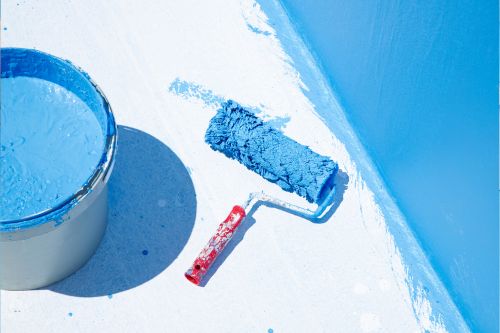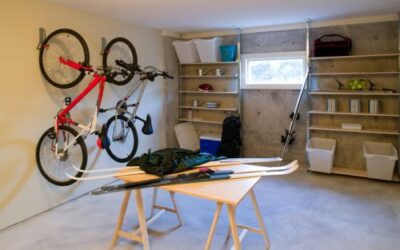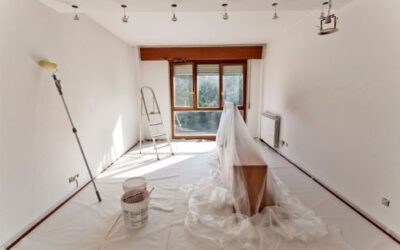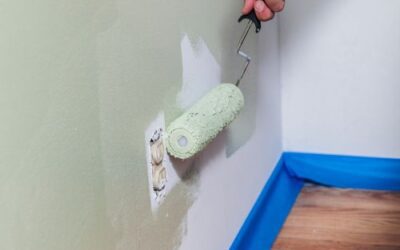Leaks don’t usually give you any warning. One day you discover a dark spot behind the wardrobe or a corner of the ceiling with buckled paintwork and you realise that damp has been working quietly for some time. In climates with heavy rainfall or in homes close to the sea, waterproofing is no longer optional and becomes a guarantee of structural health. This is where waterproofing paint comes in, a coating formulated to create a continuous barrier against water and environmental moisture. Knowing its particularities and knowing when to apply it extends the life of roofs, façades and terraces, as well as saving on future repairs.
Contact our professionals
What makes a waterproofing paint different?
Unlike a standard acrylic paint, a waterproofing paint is formulated with special resins (elastomeric acrylic, polyurethane, epoxy or bituminous) and mineral fillers which, once dry, generate a continuous, elastic and watertight film. This film prevents the passage of liquid water – rain, dew or puddles – but allows the vapour inside to escape to the outside. In other words: it blocks the entry of humidity and, at the same time, lets the wall ‘breathe’.
If you want to learn more about the professional systems we use on roofs and balconies, you can visit our terrace waterproofing page where we explain each process step by step.
Main waterproofing paint families
-
Acrylic-elastomeric. Flexible even at low temperatures, ideal for facades with micro-cracks or for party walls very exposed to lateral rain.
-
Two-component aliphatic polyurethane. Recommended for flat walkable roofs, roof terraces and balconies with occasional ponding. It is more resistant to UV rays and wear and tear caused by foot traffic.
-
Epoxy + polyurethane system. The epoxy acts as an anti-corrosion barrier and the polyurethane provides elasticity and colour stability; it is the top choice within 300 m of the sea.
-
Fibrillated bituminous. More economical, it is applied in thick layers on non-trafficable roofs or retaining walls.
-
Flexible cementitious. A mixture of powder and latex; trowelled and often used as a base for swimming pools, planters or basements before the final finish is laid.
Each family has its own preparation requirements and minimum thicknesses. Our team offers a personalised paint advice service to help you choose the system that will ensure the desired waterproofing and aesthetic finish.
Where and when to apply
-
Terraces, balconies and flat roofs
When the asphalt membrane has lost its elasticity or the ceramic flooring shows cracks, a polyurethane waterproofing is the quick and durable solution.Professional tip: with a total thickness of 1.2 kg/m² you get up to ten years guarantee against leaks..
-
Facades facing the dominant rain
Las caras norte y levante sufren más humedad retenida. Una elastomérica acrílica‑siloxánica protege el muro, reduce la absorción de agua y evita la aparición de moho superficial. -
Parapets and copings
These are the weak points of any roof. Sealing them with a layer of liquid polyurethane prevents water from infiltrating and degrading the façade paint underneath. -
Basements and buried walls
When moisture pushes up from the ground, a flexible foundation barrier is applied to the inside face. It can then be finished with mortar or decorative paint. -
Coastal areas with high salinity
Near the sea, saltpetre accelerates wear and tear. Here we prefer epoxy + PU systems or siliconised resins with high water-repellent properties, which you will find in our exterior paints section.
Signs that it is time for waterproofing
-
Damp stains on ceilings or interior walls.
-
Peeling and blistering of exterior paintwork.
-
Salt blooms (‘saltpetre’) visible on the surface.
-
Cracks in terraces that become longer after each rainy season.
-
Cracks in expansion joints or in joints between parapets and roofs.
When faced with any of these symptoms, it is advisable to act quickly. Early treatment is cheaper than repairing the damaged structure.
Key steps in professional application
-
Pressure cleaning (100-120 bar) and removal of mould with fungicide.
-
Crack repair with acrylic fibre filler or repair mortar.
-
Sealing primer to equalise absorption and improve adhesion.
-
Application of paint in two or three cross coats until the thickness recommended in the technical data sheet is reached.
-
Reinforcement with polyester mesh at singular points (drains, junctions, joints).
-
Cure without rain for a minimum of 24 hours and without traffic in polyurethanes for up to 48 hours.
Maintenance and repainting
A properly applied coat of waterproofing can last for a decade; even so, check drains and joints every year, and clean the surface with low pressure water every two to three seasons. If the finish becomes dull or shows micro-cracks, a light repaint will suffice to prevent future leaks.
In conclusion, waterproofing paint is not just a barrier against water: it is long-term peace of mind and savings on repairs. Choosing the right product and applying it under the right conditions guarantees damp-free roofs, terraces and facades for years to come. If you need an on-site diagnosis or a quote for professional application, contact us through the terrace repair and waterproofing page or in the contact section. The technical team of Bartolomé Bas Pinturas will help you to protect your home against humidity, saltpetre and rain.
Other publications that may interest you
Paint suitable for basements and poorly ventilated rooms
Basements, storerooms or garages have unique conditions: poor ventilation, high humidity and increased risk of mould or condensation. Using conventional paint in these spaces is a common mistake that leads to ephemeral finishes and health problems due to fungi or...
How often should a house be painted depending on its use?
The frequency with which you should paint a house is not always the same. It depends on several factors: the use given to each room, the quality of the paint used, exposure to light or humidity, and even the colour. In this guide we explain how often you should renew...
Tips for painting a room without staining doors and sockets
Painting a room may seem like a simple task, but without the right preparation it's easy to end up with splashes on doors, sockets, switches and even skirting boards. If you want a clean, professional finish, we've got the best tips to avoid stains and save you...




